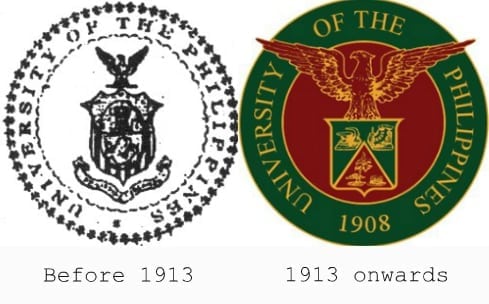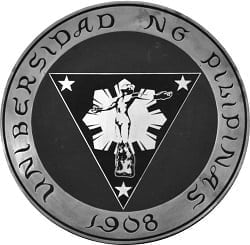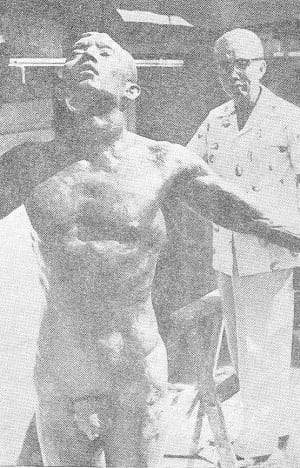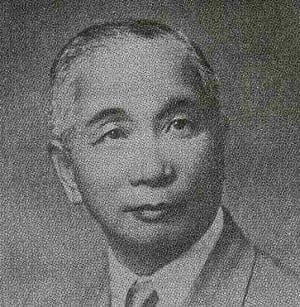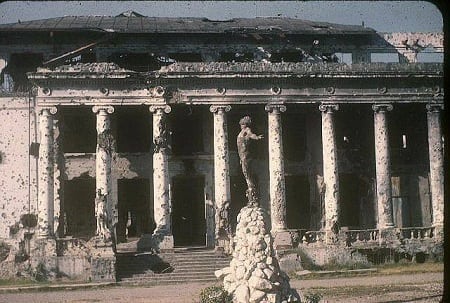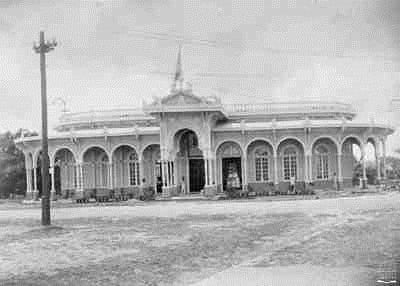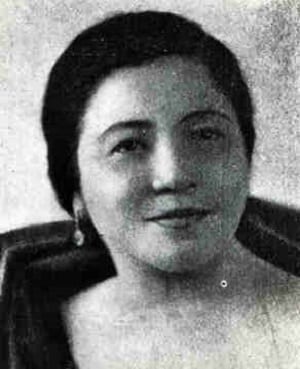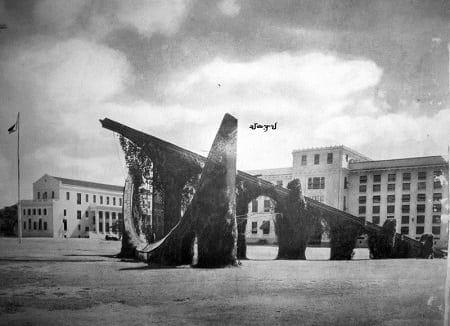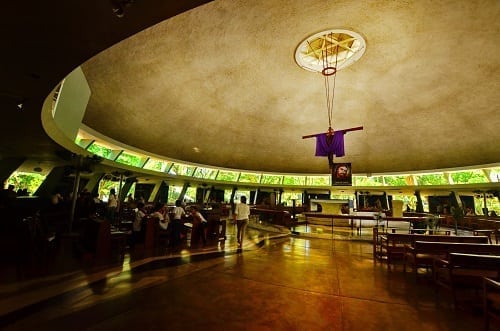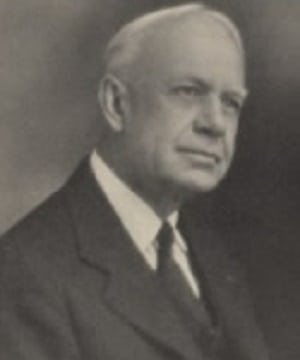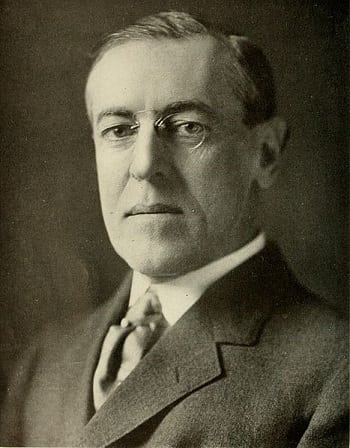30 Things You Didn’t Know About University of the Philippines
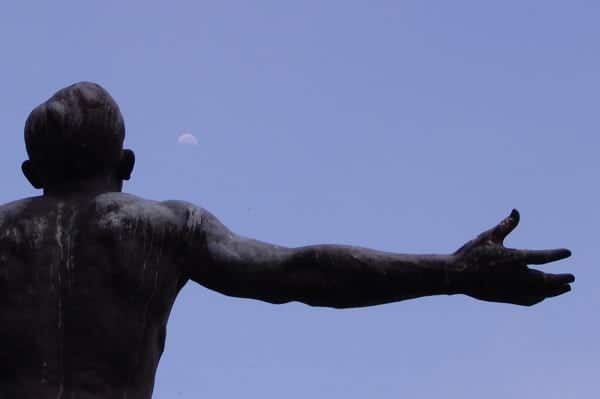
It’s impossible to fully understand our history without exploring the origins of our very own University of the Philippines.
After all, an impressive number of Filipino leaders, national artists, scientists, and other trailblazers who shaped our history came from U.P.–an unparalleled reputation that is more than 100 years in the making.
Established on June 18, 1908 through Act No. 1870 of the Philippine Assembly, the University of the Philippines was designed to provide “advanced instruction in literature, philosophy, the sciences and arts, and to give professional and technical training” to qualified students regardless of “age, sex, nationality, religious belief and political affiliation.”
Fast forward to the present time, U.P. continues to be the bastion of intelligent ideas and gifted minds. Surviving the competitive entrance exam that is UPCAT provides students with two advantages: lower tuition fees and other financial assistance, thanks to taxpayers’ subsidies; and the “Tatak UP,” a term referring to the university’s way of teaching its students how to think independently and therefore easily adapt to all kinds of environment.
As a tribute to its commitment in shaping the minds of future Filipino leaders and innovators, here are 30 interesting facts you might not know about U.P.
Featured image courtesy of Shubert Ciencia via Flickr.
1. The first U.P. logo.
Before 1913, U.P. used a logo adapted from the coat-of-arms of the Philippines, which shows an American bald eagle perched on the crest of a shield with its wings outstretched. The same type of bird can be seen on the present seal which was approved by the Board of Regents on February 25, 1913.
However, unlike the shield on the older version which symbolized Manila and the 13 American colonies that fought for independence against Great Britain, the one on the present seal represents the university’s three fields of specialization, namely, engineering, agriculture, and medicine.
2. Why American bald eagle?
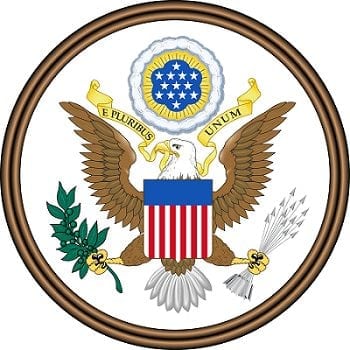
The answer is quite simple: Americans established U.P.
The same type of bird can be found on the Great Seal of the United States, also known as their national coat of arms. Eagle, in general, is commonly referred to as the king of birds and is said to represent power and courage–the reason why it appeared on the national emblems of ancient Rome, France, and the United States.
3. The current University of the Philippines seal was nearly discontinued.
Speaking of the American bald eagle, it was exactly the reason why a U.P. president once considered getting rid of the present logo and replacing it with something more nationalistic.
Through a memorandum circular dated November 13, 1971, then U.P. President Salvador P. Lopez opened a competition for the design of a new seal, saying that the “eagle appears to be particularly inappropriate as the dominant element in the seal of a university.”
The competition, which officially closed on December 10, 1971, was won by then National Museum Director Galo B. Ocampo. His winning design featured an inverted red triangle in the middle of a green circle. The position of the triangle suggests the importance of “the masses of our people in the structure of Philippine society.”
Within the triangle, on the other hand, are three stars representing Luzon, Visayas, and Mindanao; a sun symbolizing “freedom for the individual, liberty for the nation, and independence for all”; and the Oblation, the “symbol of youth—hope of the Fatherland.”
Unfortunately, use of Ocampo’s design was deferred by the Board of Regents in 1972. It only resurfaced in 1998 during the celebration of U.P.’s 90th anniversary. Today, Ocampo’s logo can be found on the marker of the Centennial Archival Collection on the third floor of the UPD Main Library.
4. The true meaning of the Oblation.
Undoubtedly the most famous icon of U.P., the Oblation (Pahinungod, Paghahandog or Oblasyon in Filipino) was first conceived during the presidency of Rafael Palma.
President Palma commissioned National Artist Guillermo Tolentino (then a professor at the U.P. School of Fine Arts) to translate the second stanza of Jose Rizal’s Mi Ultimo Adios into a U.P. monument.
Aside from the iconic nude man with outstretched arms, however, the statue also features smaller details, the meanings of which are as important as the centerpiece itself. Tolentino has this to say:
“The completely nude figure of a young man with outstretched arms and open hands, with lifted head, closed eyes and parted lips murmuring a prayer, with breast forward in the act of offering himself, is my interpretation of that sublime stanza. It symbolizes all the unknown heroes who fell during the night.
The statue stands on a rustic base, a stylized rugged shape of the Philippines Archipelago, lined with big and small hard rocks each and everyone of each represents an island.
The kataka-taka (wonder plant) whose roots are tightly implanted on Philippine soil, is the link that binds the symbolical figure to an allegorical Philippine Group. Kataka-taka is really a wonder plant. It is called siempre vivo (always alive) in Spanish. A leaf or a piece of it thrown anywhere will sprout into a young plant. Hence it symbolized the deep-rooted patriotism in the heart of our heroes. Such patriotism forever grows anywhere in the Philippines.
The 3.5-meter high statue stands for the 350 years of Spanish rule in the Philippines.”
5. Who was the real Oblation model?
No, it’s not Fernando Poe Sr. as most people likely believe. Although it’s not clear exactly how and why such myth started, university literature always points to not only one but two candidates as the real Oblation models.
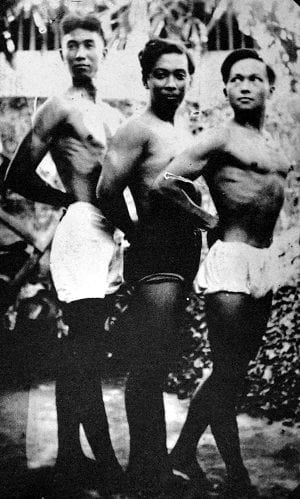
Anastacio Caedo (right). Source: University of the Philippines System Website
According to the book written by the late UP Diliman College of Fine Arts (UPD CFA) Prof. Rodolfo Paras-Perez, the Oblation was created by Tolentino based on the physique of his student assistant, Anastacio Caedo, and the proportion of his brother-in-law, Virgilio Raymundo.
A former student of Caedo, UP Open University (UPOU) Chancellor Grace Javier Alfonso, attested the truth of this story by claiming Caedo himself once declared that he was indeed the Oblation model.
6. In the original design, the Oblation was completely naked.
Of course, the idea didn’t sit well with the conservative. Soon, U.P. President Jorge Bocobo (Palma’s successor) came up with a suggestion: the addition of a fig leaf to cover the genitals.
The Oblation was funded by the U.P. students of 1935-1936, under the leadership of student council presidents Potenciano Illusorio and Jose B. Laurel, Jr. who served during the first and second semester respectively.
7. Controversy regarding U.P. Oblation’s date of inauguration.
The problem with the Oblation is that historical sources can’t seem to agree on what date the original statue was unveiled. If the marker on the Oblation is to be believed, then it was inaugurated in March, 1936. However, things get a bit confusing when you read books at the UPD Main Library Archives.
According to the 1984 book entitled The University of the Philippines: A University for Filipinos, the iconic monument was “first erected on the old Padre Faura campus at dedication ceremonies held on National Heroes’ Day in 1935.” At that time, National Heroes Day was celebrated every 30th of November.
The book Tolentino by the late Prof. Rodolfo Paras-Perez provides the same information, and also named Gregoria de Jesus, widow of Andres Bonifacio and then married to Julio Nakpil, as the special guest of the event.
On the other hand, the book Sites and Symbols: UP Diliman Landmarks, published in 2000 by the UPD Office of the Chancellor, has another version of the story: “Dedicated to the country’s heroes, the Oblation was unveiled in 1939 at Padre Faura by Gregoria de Jesus de Nakpil, widow of Andres Bonifacio.”
8. The Exodus.
As early as 1925, transfer of UP to a larger campus was already being planned. By 1939, the plan of moving the university became part of a bigger project: the transfer of the capital to a whole new city. To complete the said project, President Quezon commissioned a team consisting of Filipino architect Juan Arellano, American planner Harry Frost, landscape architect Louis Croft, and engineer AD Williams.
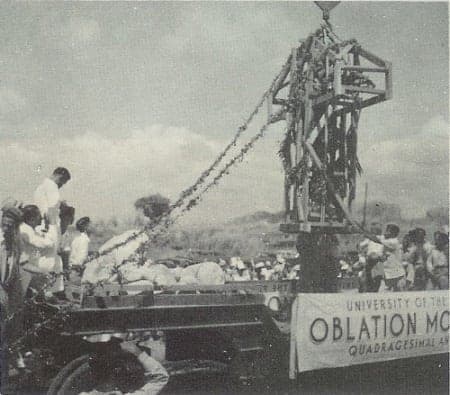
Although the final master plan as well as the first two buildings were already completed, the university had to wait until the war was over before relocating to the new campus. Between December, 1948 and January, 1949, under the leadership of UP President Bienvenido Gonzales, the university gradually transferred from Manila to the larger campus in Diliman. The Oblation, on the other hand, was subsequently moved on February 11, 1949.
Just in time for UP’s quadragesimal anniversary, the transfer of the Oblation was accompanied by a motorcade of students, faculty, and alumni. This event was almost halted when the budget for the transfer was “held hostage” in Congress due to political interests.
The Oblation’s creator, Guillermo Tolentino, personally led the detachment of the statue from the old base. And in a manner similarly done to sacred statues, the Oblation was wrapped in a tight canvas before it was put on a flatbed truck that would bring it to its new home.
9. The present location of University of the Philippines-Manila was formerly the site of the 1895 Manila Regional Fair.
Known as the first regional exposition in the country, the Exposición Regional de Filipinas officially opened on January 23, 1895 under the supervision of D. Angel Aviles, director general of the civil administration.
The exposition was participated by various Filipino artists, most of whom came from the provinces. Some of those who stood out were gold medallist Isabelo Tampinco, the great sculptor whose works included the Manila Cathedral’s facade; and the young artist named Carmen Zaragosa who won the Cooper medal for her painting.
Also Read: 29 Things You’ll Never See in Manila Again
10. There were only 10 graduates during UP’s first commencement in 1911.

The first commencement day in the history of U.P. was held in Manila on March 31, 1911, preceding the appointment of the first U.P. President by three months.
Ten students made it to their graduation day. From this group, three were awarded a bachelor’s degree: Manuel L. Roxas (not to be confused with the late Philippine President Manuel A. Roxas), the editor-in-chief of the Philippine Agriculturist and Forester who received the degree of Bachelor of Science in Agriculture (BSA); and Clodoaldo Tempongco and Jose Zamora, both of whom received the degree of Bachelor of Agriculture (BAgric).
Aside from the three people mentioned, there were also graduates from other colleges–three from the College of Medicine, and four from the College of Liberal Arts.
The number of graduates gradually increased over the years, with the second commencement in 1912 producing 30 graduates. During its first few years, U.P. was already recognized as one of the leading institutions of higher learning in the Far East, joining the ranks of Japan’s best universities.
11. White togas were once used in University of the Philippines’ graduation rites.
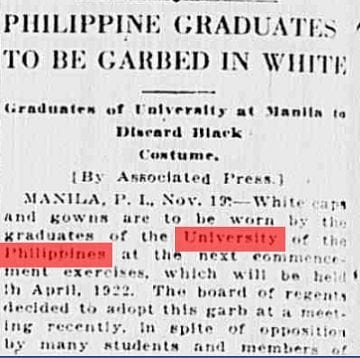
Nowadays, we only see white togas being worn by high school students during graduation. In U.P. history, however, white caps and gowns were once considered the attire of choice instead of the black toga and even the now-iconic UP Sablay.
In the 1921 inauguration of UP’s third president (i.e. Dr. Guy Potter Benton), the professors were required to wear white togas. The November 20, 1921 issue of the Richmond Times-Dispatch (see news clipping above) also reported that the Board of Regents approved the use of white togas for the university’s commencement exercises the following year.
According to Dr. Alajandre Albert, a member of the BOR, the said attire is “more suited to a tropical country like the Philippines than the conventional black.” The decision didn’t sit well with some of the students and teachers at that time. Among those who opposed it were Filipino political science teacher Quirino Austria and Ms. Carmen Wilson, the American physical directress of women who thought that students wearing white togas would only “look like a ghost in white.”
12. The woman of many firsts.
Dr. Maria Paz Mendoza-Guanzon, one of the 30 students who graduated in 1912, also holds the distinction of being the first Filipina to receive a high school diploma as well as the first woman to graduate from the UP College of Medicine, considered as one of the country’s first medical schools.
However, Dr. Mendoza-Guazon was not the first woman physician in Philippine history; this distinction belongs to Dr. Honoria Acosta-Sison, a pensionado who earned her medical degree from the Women’s Medical College of Pennsylvania and eventually became the first Filipino woman obstetrician.
Nonetheless, Dr. Mendoza-Guazon succeeded in reaching new milestones later in her career: She became the first Filipino physician to write about choriocarcinomas, first to publish autopsy findings of bangungut, and also the first Filipina to earn full professorship rank in U.P.
13. Before Oblation, there was the floral sundial of the 1920s.
Years before the Oblation was conceived, a sundial (a time-measuring device and also the symbol of the College of Engineering) served as UP’s foremost icon.
In the 1930s, the first sundial at the Padre Faura campus had to be replaced by a newer floral sundial designed by Edward R. Hyde, then College of Engineering dean, in collaboration with Professors E.P. Angeles and Alejandro Melchor, to whom Melchor Hall was named after. At the time, UP’s floral sundial–its gnomon measuring 60 ft. in length–was recognized as the world’s largest university sundial.
Eventually, the floral sundial in the original UP campus in Manila had to be dismantled to give way to an ROTC drill area. When the College of Engineering transferred to Diliman, a building (i.e. Melchor Hall) as well as a slide rule sundial were constructed in 1951 and 1958 respectively. The latter was destroyed when Typhoon Yoling hit Manila in 1968, and was subsequently replaced by the present-day sundial located along G. Apacible Street.
14. The Sunken Garden and why it is sunken.
Alternatively known as the Gen. Antonio Luna Parade Grounds, UP’s Sunken Garden is a 5-hectare basin-shaped natural depression located at the end of the Academic Oval Circle. It was originally the property of the UP-ROTC when the Diliman campus was established, but has since been used as the venue of parades, concerts, and other annual festivities.
As for the reason why it is sunken, various theories have sprouted over the years, with some bordering on gossip.
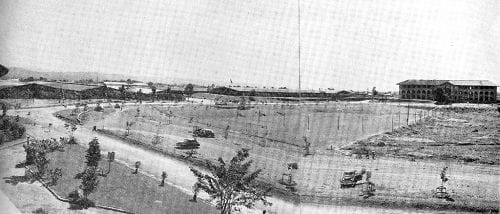
According to university lore, the Sunken Garden is directly above a fault line, which probably explains its shape. Rumor also has it that the garden continuously sinks every year, at rates varying from one to ten centimeters. However, in an interview with the UP Newsletter, Prof. Alfredo Mahar Francisco A. Lagmay clarified that there is no fault line under the Sunken Garden, and that the West Marikina Valley Fault is approximately three kilometers away from the university.
Lagmay, an expert from the UPD National Institute of Geological Sciences, also believe that the campus waterway system has something to do with the shape of the Sunken Garden. A creek from Philcoa goes into the campus, passes through the lagoon, then split into two along the area near the Main Library, and finally along the sides of the Sunken Garden. The creek that used to cut across the Sunken Garden, Lagmay pointed out, was “filled with soil and forced the water to divert from its original flow.”
And although there is no official study yet to prove that the Sunken Garden is indeed sinking, Lagmay confirmed that some parts of Metro Manila are really experiencing the phenomenon. The rate of sinking, according to him, is at 6.1 centimeters per year.
15. UP Diliman’s Church of the Holy Sacrifice is the country’s first circular chapel and thin-shell dome. It also features the works of several National Artists.
The church–which was elevated to a university parish in 1977–is both a National Cultural Treasure and a National Historical Landmark.
The distinction was brought by the fact that this church is the only structure in the Philippines where you can find the works of several National Artists: The River of Life floor terrazzo by the National Artist for Visual Arts Arturo Luz; the fifteen murals of the Stations of the Cross by renowned painter Vicente Manansala with the help of Ang Kiukok; and the marble altar and the Crucifixion sculpture by Napoleon Abueva.
Moreover, the unique design of the church was the idea of another National Artist, Leandro Locsin, who basically took charge of the whole project and made the circular chapel in the International Modern Style.
Locsin was assisted by Alfredo Juinio (future dean of the College of Engineering), who served as the structural engineer; and David Consunji, who helped find the best concrete-aggregate mix to be used in the project.
In 1968, the church once again welcomed another National Artist, this time serving as the venue for the premier of Jose Monserrat Maceda’s concert titled Pagsamba.
16. The 1971 Diliman Commune was inspired by the 1871 Paris Commune.
A year before the declaration of martial law, U.P. Diliman served as the venue of a nine-day student protest in which the campus was briefly transformed into the “Diliman Commune,” a stronghold symbolizing the community’s defiance against the Marcos government.
From February 1 to February 9, 1971, people stood witness as students, professors, and staff of U.P. Diliman barricaded the roads in support of transport workers protesting the oil price hike. Things went from bad to worse when Inocentes Campos, a U.P. Math professor and a known pro-Marcos, shot and killed 17-year-old BS Zoology major Pastor Mesina after a heated encounter with the protesters.
Soon, the Metropolitan Command (Metrocom) soldiers started their hostile invasion of the campus, leaving another student, 19-year-old Veterinary Medicine major Reynaldo Bello, badly injured. However, the Communards refused to surrender; in fact, the struggle allowed them to showcase their creativity.
From the use of self-igniting molotovs (created by Physics professors) as defensive weapon to the “anti-aircraft kwitis” launched at the Engineering and AS rooftops to drive away air force helicopters, the communards fought hard to achieve academic freedom. DZUP not only gave updates on the situation in U.P., but also played the infamous sex tape involving President Marcos and his alleged paramour, Dovie Beams. Bandilang Pula, on the other hand, served as the official paper of the Diliman Commune and was published through the UP Press.
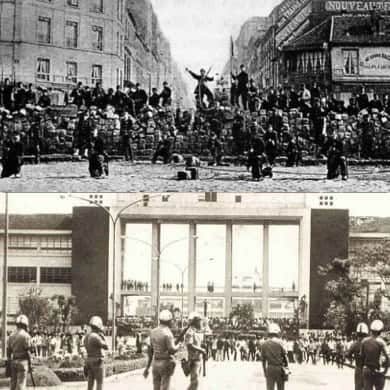
According to literary critic Dr. Epifanio San Juan, the Diliman Commune was inspired by two prominent events in history: the Paris Commune, which ruled Paris from March 18 to May 28, 1871 and was formed out of frustration of the working and lower-middle classes of that time; and the 1872 Cavite Mutiny, an uprising that ultimately led to the execution of the three martyr priests known as GOMBURZA.
The Diliman Commune ended in February 10 through the “Provisional Directorate ng Demokratikong Komunidad ng Diliman” which issued several demands, among them the prohibition of military presence in the campus. In 1996, to commemorate Diliman Commune’s 25th anniversary, a marker was installed along the University Avenue, a few meters away from where the barricade was set.
17. The first UP President was a WWI hero.
During its first three years, U.P. had no president because the Board of Regents was too busy setting up the colleges. In 1911, when the BOR finally had the time to appoint one of its members as the university’s first president, they chose an American Protestant pastor named Murray Bartlett.
Born on March 29, 1871 in Poughkeepsie, New York, Murray Simpson Bartlett earned his bachelor of arts and master of arts from Harvard University. He also obtained a degree in theology and a doctor of divinity degree from the General Theological Seminary in New York City and the University of Rochester respectively.
After moving to the Philippines, Bartlett first served as the dean of the American Cathedral of St. Mary and St. John in Manila. He later became a member of the UP Board of Regents (1909-1911) which then elected him as the university’s first president.
During his term (1911-1915), he envisioned UP to become the “University for the Filipino” supported by the people’s money. His leadership also saw the university’s acquisition of the Philippine General Hospital as well as the establishment of the Graduate School of Tropical Medicine and Public Health.
Two years after he resigned from UP presidency, Bartlett was appointed representative of the Protestant Episcopal Church War Commission at Camp Kearney, CA. In 1918, he was sent to Europe where he served as the Acting Chaplain of the 18th Infantry, 1st Division.
In the midst of war, Bartlett cared for the wounded soldiers, buried the dead, and literally risked his life just to fulfill his mission. He himself was seriously wounded near Soissons, France during the Marne-Aisne Offensive on July 22, 1918. For this feat, he was awarded the Distinguished Service Cross and was made a Chevalier of the French Legion of Honor.
After the war, Bartlett was appointed president of Hobart and William Smith Colleges. Married but with no child, Bartlett died on November 13, 1949. The Bartlett Hall in UP was named after him.

Bartlett’s gold pocket watch, on the other hand, is now displayed at the University of the Philippines Manila – Museum of History of Ideas (formerly the College of Dentistry Building). The said watch, embossed with a UP logo, was first given to Bartlett by the U.P. faculty upon his retirement in 1915.
18. A U.S. President was offered to become UP’s third president.
When Ignacio Villamor (father of WWII hero Jesus Villamor) stepped down as UP’s first ever Filipino president, the board of regents wasted no time in finding a successor. As fate would have it, the position went to another American, Dr. Guy Potter Benton, who accepted the position after being offered a salary almost equal to that of the Governor-General.
However, there were other bigger personalities considered for the position–and an outgoing US president was one of them.
As early as 1920, there were already news circulating about President Woodrow Wilson getting an offer to become UP’s next president. Wilson’s term of office was about to expire the following year, and some of the members of UP board of regents thought he was a perfect candidate to lead the Philippines’ premier university. In fact, an annual salary amounting to 100,000 up to 200,000 pesos (equivalent to $100,000 at that time) was part of the offer to convince Wilson to take the position.
Did you know? Dwight D. Eisenhower almost became Quezon City’s first chief of police
The said offer was sponsored by Conrado Benitez, dean of the university, and then Senator Pedro Guevarra, member of the board of regents. Even though the role as UP president was relatively more humble than Wilson’s current position at that time, Benitez argued that “if it is explained to him that the Philippines are the meeting place of the cultures of East and West and that the University of the Philippines is growing to be, and surely with his able direction, is going to be instrumental in the realization of this, surely this appeal will be a powerful inducement to make him accept the position.”
Obviously, the offer didn’t push through. After leaving US presidency in 1921, Wilson served as the president of the American Historical Association. He died at his home a few years later due to stroke and heart-related problems.
19. Dean Ursula and University of the Philippines’ forgotten festival.
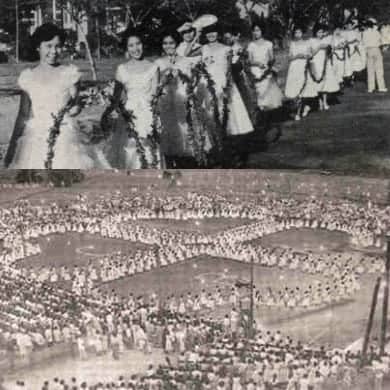
Cadena de Amor was a turnover ceremony symbolizing the transfer of responsibilities from senior coeds to juniors. As the name suggests, the rite, which was based on the Daisy Chain of Vassar College, involved passing of long garlands of cadena de amor blossoms between seniors dressed in white and juniors in their pink gowns while singing “Auld Lang Syne.”
Usually held in mid-May, the Cadena de Amor ceremonies had four phases in the 1960s: verdant leaves (processional), petals (acceptance by the juniors of the responsibilities), loops and links (passing of the cadena de amor by graduates to the new seniors) and vines (speeches by juniors and senior students and by the outgoing president of the UP Women’s Club). A Pink and White Ball was usually held in the evening.
The annual festival also crowned three muses to be the stars of the event: two senior coeds as Alma Mater and Filipinas; and one junior to represent Lakambini (formerly Maria Clara). The three ladies were chosen by the board of judges based on their beauty, personality, leadership, and academic performance (their average should be at least 2.5).
First held along Padre Faura, Manila, the festival also required all its attendees to recite a poem written by Trinidad T. Subido and sing the Awit ni Maria Clara song. Also dubbed as the “festivals of girls and flowers,” Cadena de Amor was last held in 1968, amidst the rise of student activism in the university.
The woman who initiated Cadena de Amor in 1934 had a different story. Fondly called “Kolynos Girl” for her smile (Kolynos was an old brand of oral care products), Professor Ursula Uichanco-Clemente was admired for her exceptional skill in remembering the names of her former students.
UP coeds, however, remember Dean Ursula for her strict rules. It is said that she used to lead motorized patrols at night to ensure nocturnal lovers were not roaming around the campus.
As said by her former student, broadcaster and host Solita “Mareng Winnie” Monsod, Dean Ursula had created a set of rules in her Euthenics classes. Among the rules were the “one-foot rule,” which was basically the distance between a male and female student while dancing; the proper time of visits (5:00 PM); and the proper length of such visits (30 minutes to 1 hour).
20. The first student protest march was led by then 20-year-old Carlos P. Romulo.
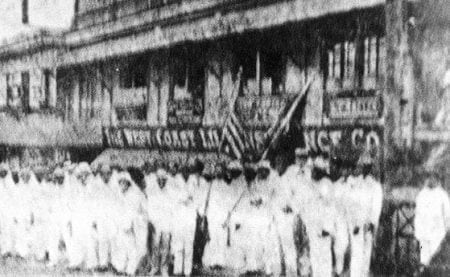
Activism has long been known as a tradition in UP. Its beginnings can be traced as far back as 1917 when UP instructor Victoriano Yamzon was unjustly arrested by police officers, who thought the former was part of the rowdy crowd during the University Day celebration.
The first UP student protest march, on the other hand, happened on July 17, 1918. The student demonstration, led by Carlos P. Romulo and Jose Romero, was held to express the students’ displeasure towards the unwarranted attack of Manuel Xeres Burgos of the Manila Times against UP President Ignacio Villamor. Participants of the said student demonstration marched from the university campus all the way to the Manila Times office near the Sta. Cruz Bridge.
Carlos P. Romulo went on to become one of the greatest public servants in Philippine history. He also served as the 11th UP President from 1962 to 1968.
Continue Reading: 30 Things You Didn’t Know About University of the Philippines (Part II)
FilipiKnow
FilipiKnow strives to ensure each article published on this website is as accurate and reliable as possible. We invite you, our reader, to take part in our mission to provide free, high-quality information for every Juan. If you think this article needs improvement, or if you have suggestions on how we can better achieve our goals, let us know by sending a message to admin at filipiknow dot net
Copyright Notice
All materials contained on this site are protected by the Republic of the Philippines copyright law and may not be reproduced, distributed, transmitted, displayed, published, or broadcast without the prior written permission of filipiknow.net or in the case of third party materials, the owner of that content. You may not alter or remove any trademark, copyright, or other notice from copies of the content. Be warned that we have already reported and helped terminate several websites and YouTube channels for blatantly stealing our content. If you wish to use filipiknow.net content for commercial purposes, such as for content syndication, etc., please contact us at legal(at)filipiknow(dot)net
